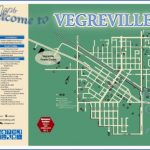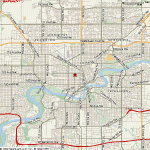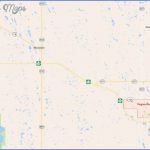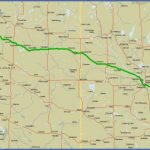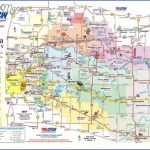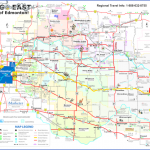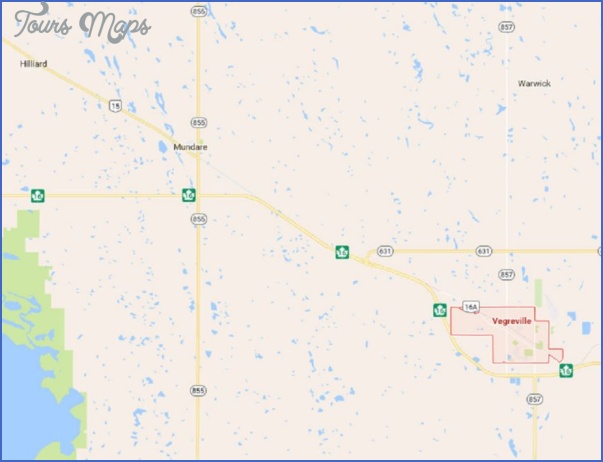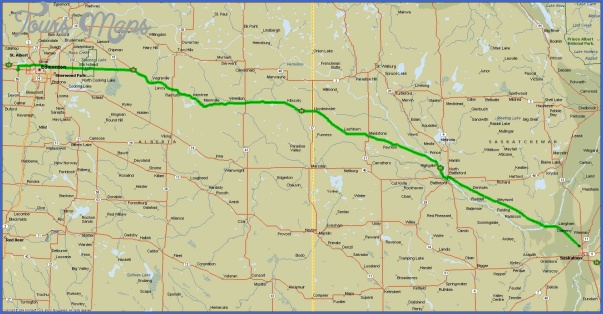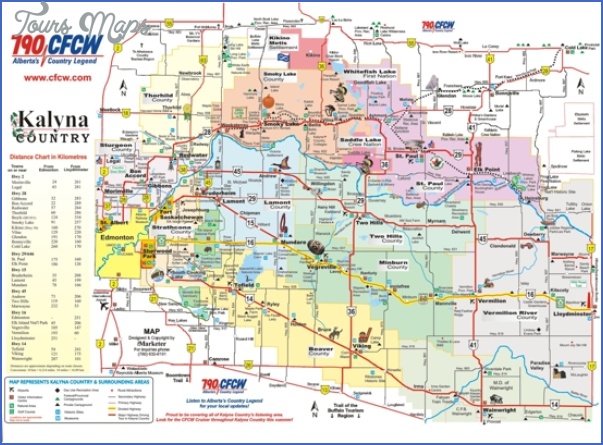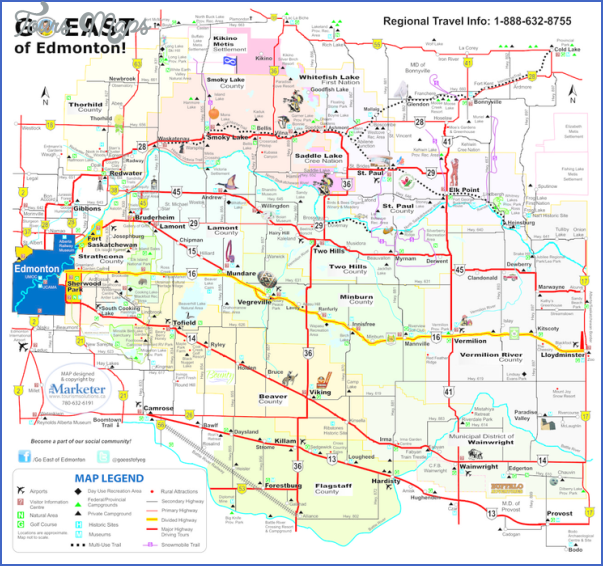VEGREVILLE MAP EDMONTON
Directions: Exit Edmonton on Hwy 16 east, and access the town via the Hwy 16A east exit toward Vegreville.
Distance: 102 km, or about 1 hour and 9 minutes, from Edmonton.
Info: www.vegreville.com.
The community of Vegreville was named in honour of Father Valentin Vegre of the Oblates of Mary Immaculate (OMI), a missionary who began serving western Canada in the early 1850s.
Vegreville’s first settlers arrived in April 1894. French Canadians came from Kansas and were joined by English families from the United States and eastern Canada. Immigrants from Eastern and Central Europe, as well as the British Isles, followed.
Vegreville’s post office opened in December 1895, and the Canadian Northern Railway came within 7.25 kilometres northeast of the hamlet by 1905. Anxious to take advantage of rail transportation, the residents moved their buildings to be near the tracks. Incorporated as a town in 1906, Vegreville eventually became a centre for Ukrainian settlement. More than 30 different ethnic
groups lived here by the 1950s, the largest of which were British, French, German, and Ukrainian. For many dozens of years, Vegreville’s northeastern area was known as French Town.
Today, just over 5,700 people live in Vegreville. The town marks the southern point of Alberta’s largest Ukrainian bloc settlement, an area included today in Canada’s largest ecomuseumthe Kalyna Country Ecomuseum. You can explore Vegreville’s history on its restored main street, where plaques embedded in the sidewalk note major community events dating back to 1905. Beside the Vegreville Regional Museum, the Rotary Peace Park contains Peace Grove, 12 trees dedicated to promoting world peace through tourism Rotary Rendezvous Park (corner of 50th Street and 50th Avenue) features a large mural depicting town history, as well as a gazebo and flower garden. The town’s visitor information centre is located in Elks/Kinsmen Park, adjacent to the Vegreville municipal campground, where you will find picnic spots and site stoves, as well as a cook shack, gazebo, and skate park. Explore the always-open, fully restored CN caboose. The park is easy to find. Just look for the statue of a giant Easter egg!
The world’s largest pysanka (Ukrainian Easter egg) is the most intricate and beautiful of all the large monuments in Alberta. Set on a 12,150-kilogram pedestal that allows the egg to turn in the wind like a weathervane, the pysanka is 7.71 metres long, 5.4 metres wide, and 9.3 metres high. It has a 900-kilogram aluminum skin attached to a central mast at a 30-degree angle, with 177 turnbuckle struts and a colossal 1,350-kilogram internal structure. Decorated in traditional Ukrainian style, the egg’s exquisite colours and intricate symbols stand for harmony, vitality, and culture. It contains 524 star patterns, 1,104 equilateral triangles, 3,512 visible facets, 6,978 nuts and bolts, and 177 internal struts.
Built to commemorate the Royal Canadian Mounted Police Centennial of 1974, the egg symbolizes the peace and security that Mounties provided to the region’s pioneers and descendants. You will find the giant pysanka in Elks/Kinsmen Park, north on 43rd Street, just off Highway 16A, on Vegreville’s east end.
When travelling on Highway 16A east of Vegreville, just under a kilometre east of the pysanka, watch for the Our Lady of the Highway shrine. Built by the Knights of Columbus, and the only shrine of its kind in Canada, it is dedicated to the Virgin Mary to offer travellers protection. The figure is sculpted from Italian white marble, and beautifully marked stones display the Stations of the Cross around the statue.
JILL HAYDUK/TOWN OF VEGREVILLE
The world’s largest pysanka at Vegreville
Vegreville Regional Museum,
Location: 14413 Hwy 16a, 1 km east of Vegreville on Hwy 16A.
Info: Open year-roundTuesday to Sunday, 1:00 p.m. to 5:00 p.m., from June to August. Phone for schedule from September to May. Admission is by donation. Wheelchair accessible. 780-632-7650; www.vegreville.com.
The Vegreville Regional Museum explores area history beginning in 1890 and examines how the region’s agricultural base and its four largest pioneer groups of English, French, German, and Ukrainian people contributed to the prairie community. The Right Honourable Donald F. Mazankowski, P.C. Collection features 25 years of the distinguished public service of this former deputy prime minister of Canada. The Vegreville and District Sports Hall of Fame is also housed here. If time permits, consider a stroll through the museum grounds and see the historic agricultural implements. The museum is located on the site of the internationally renowned Agriculture Canada solonetzic soils research station, which operated from 1956 to 1995.
VEGREVILLE MAP EDMONTON Photo Gallery
Maybe You Like Them Too
- Explore Doncaster, United Kingdom with this detailed map
- Explore Arroyito, Argentina with this Detailed Map
- Explore Belin, Romania with this detailed map
- Explore Almudévar, Spain with this detailed map
- Explore Aguarón, Spain with this detailed map

